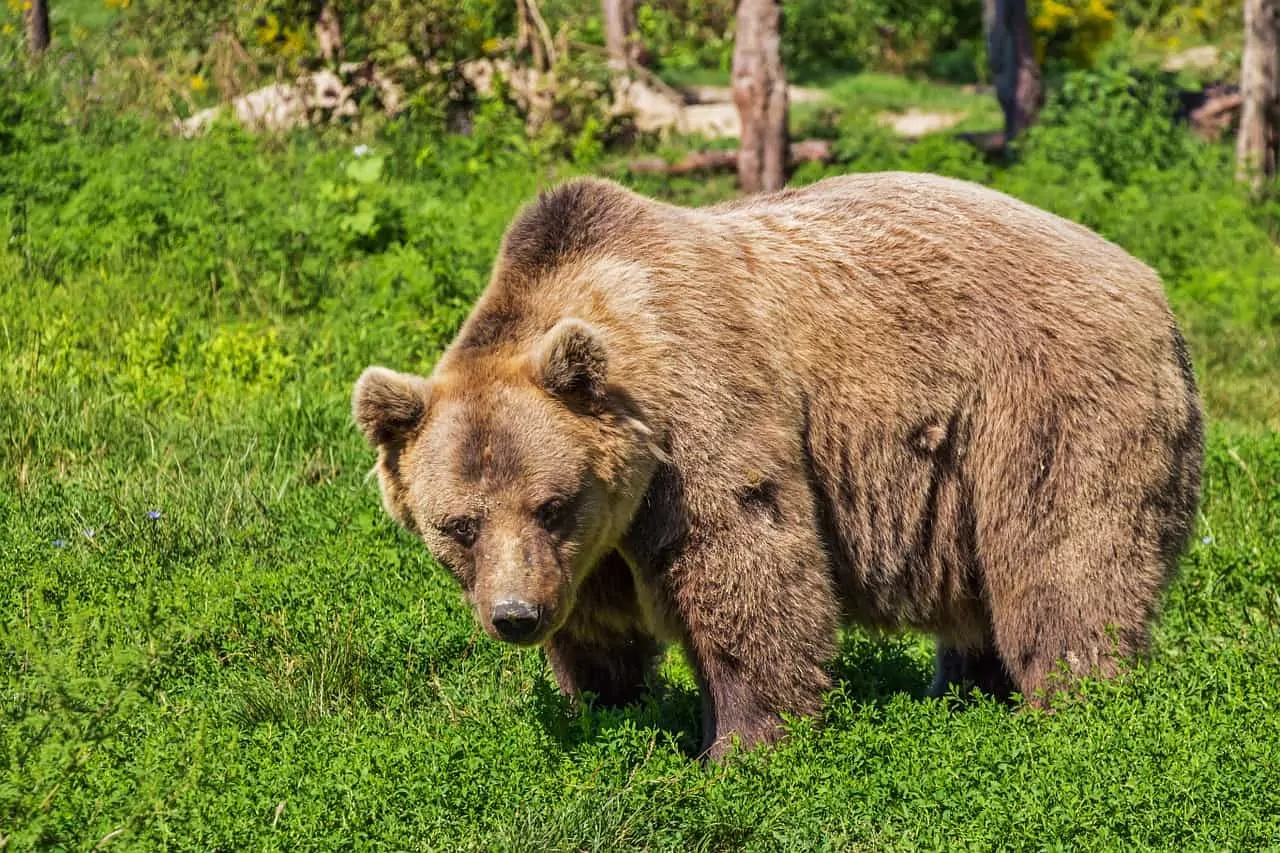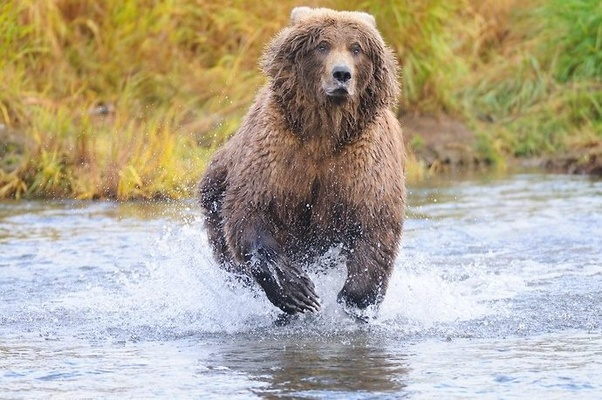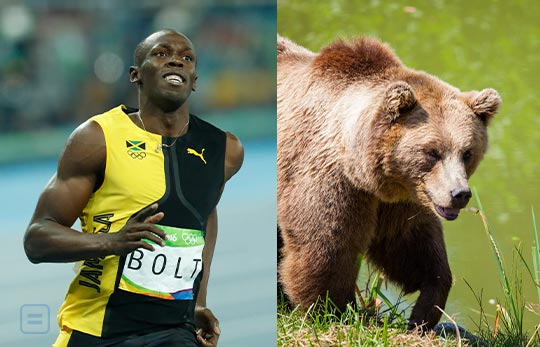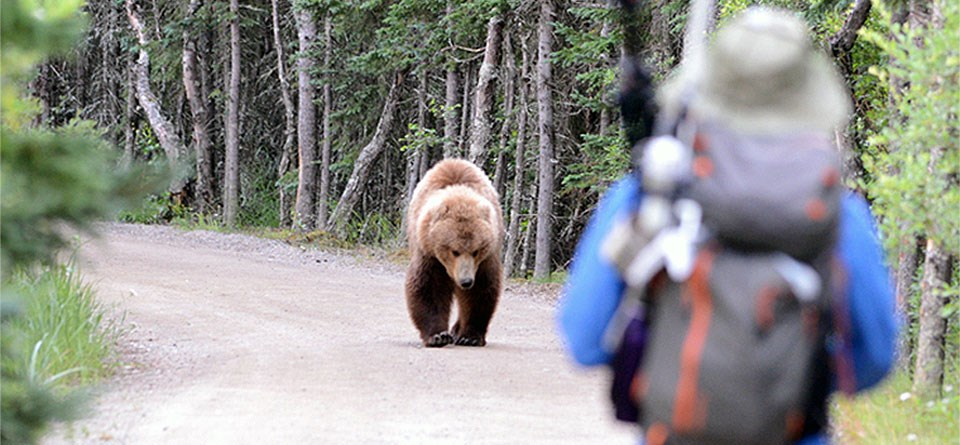How fast can a bear run? The bear running is calculated to be so much faster than you, no matter how hard you try. In any event, despite their hulky appearances, bears are very swift. Learn about the characteristics and qualities that let them move so quickly, as well as what you should do (except run) in case you come across a bear in nature.
Here are a few materials you’ll need to know about the “how fast can a bear run” question if you catch yourself alone in a dangerous wild environment. We’ll provide a few essential topics in this post to assist you in understanding how fast a bear can run and why you should never try to outrun one. They include:
- Bear Facts That Will Astound You
- What Is The Fastest Bear
- Is It Possible To Outrun A Bear
- How Do Bears Move So Quickly
- Is It Possible For Bears To Run Downhill
- What Is The Most Distance A Bear Can Run
- When You See A Bear, What Should You Do
- Summary
Bear Facts That Will Astound You
What do you know about bears? Have you ever tried to learn about them? But our revelation below will surely surprise and delight a few people about this large and calm bear.
In general
Bears are carnivorous creatures that belong to the Ursidae family. Only eight bear species exist, with the majority of them found in the North of Hemisphere and a small amount in the South. Large bodies featuring short tails, small rounded ears, and powerful, stocky legs are characteristics shared by modern bears. Five claws, long snouts, and rugged hair cannot be withdrawn among the other traits. Surprisingly, only one among the remaining species, the polar bear, is a carnivore. The big panda’s food is primarily bamboo, while the six remaining species are omnivorous.
Six out of eight species are classified as fragile or endangered by the International Union for Conservation of Nature or IUCN. Despite their massive appearance, bears are extremely agile animals, capable of reaching incredible speeds when sprinting on any surface. Furthermore, these animals are capable of climbing and swimming.
Their sizes
The polar bear is the biggest of the existing bear species, with males at adults ages weighing between 772 to 1,543 lbs and measuring between 7 and 10 feet in length. Sun bears are the tiniest of the bear species, weighing between 55 to 143 lbs and measuring between 39 to 55 inches in length. Before extinction, the American short-faced bear was the largest, weighing an average of 3,500 lbs and standing 11 feet tall.
Bears seem ponderous when they get up because the weight is spread mainly at their bodies’ backs. When the animal rises, those hind limbs are powerful enough to carry the entire weight of this animal. The high-speed bursts are also controlled by those hind legs. The claws on the animal’s rear and front limbs additionally aid in the animal’s grip on the ground. Another factor that aids their attainment of high speeds is that they’ve had four legs, implying they have more power for speed generation. As a result, practically any animal with four legs with a size comparable to a boy can easily outpace a human, whatever the environment.
What Is The Fastest Bear
How fast can a bear run? The obvious answer is that speed of a bear can easily outrun a sprinting human at full speeds. Brown bears or grizzly bears are the fastest bears of the existing species. Evidence suggests that grizzly bears can comfortably reach a top speed of 35 mph. A bear can outrun any car traveling down a country road at this speed. Polar bears are big animals that, despite their size, are exceedingly fast. Polar bear run speed is noted to be up to 24 mph (40 km/h).
It is a widespread misperception that the bear is overweight and thus incapable of sprinting at fast speeds. The bear has substantial similarities to dogs (both caniforms), contributing to their high top speeds. Bears, in contrast to their massive size, which comprises a significant quantity of fat, have a substantial amount of muscle that allows them to handle enormous bodyweight comfortably.
Is It Possible To Outrun A Bear
Now, you know the answer to the question: “How fast can a bear run?” But is it possible to outrun a bear?
Usain Bolt, a Jamaican sprinter, the world’s fastest man, can reach high speeds of just over 27 mph. He is a multi-time World record holder runner. He is a many-time World champion in the field of running. Over 100 m and 200 m, he has beaten the global record for the fastest time. On August 16, 2009, he was timed at 27.8 mph (44.72 km/h). Between the 60 to 80 meters in the 100 m sprint, the pace was measured.
Black bears can run at speeds of up to 30 miles per hour, as previously stated. American black bears would almost certainly beat the world’s fastest man in a competition over 100 – 200 meters. We don’t stand a chance against black bears as Usain Bolt can not beat it. Usain will be left behind if faced with a black bear or grizzly.
Even Usain Bolt, the world’s fastest man, couldn’t outrun a hungry grizzly or black bear at peak speed. With 27.8 miles per hour, he was about 4 miles per hour quicker than his usual speed and more than 10 miles per hour quicker than the usual person sprint. Even so, that’s 7 miles per hour slower than a grizzly’s peak speed and a little over 2 miles per hour slower than black bears’.
Bolt might become able to outpace a moon bear (Asiatic black bear) or a lumbering polar bear, which can reach speeds of 25 mph, as well as a sloth bear or panda, which may reach speeds of 20 mph.
Even still, the charts depicting his furious sprints show that he’ll only maintain his maximum speed for one-two seconds, just like any other human. According to multiple stories from the early 1900s in Yellowstone Park, a bear can hold 25 – 30 mph speeds for two miles (based on only data of bear speed still available until now).
The average human, moving at a leisurely 15 mph, would just not be able to keep up. The good thing is that most bears and other wildlife prefer to avoid humans rather than attack them. They only chase to defend their territory, cubs, and food.
How Do Bears Move So Quickly
Ursid animals are surprisingly fast, despite their hefty, boxy forms, a generous amount of fur, and flat fleet that you’d assume would slow them down. The bulging, muscle-topped shoulder blades of grizzlies, in an instance, power the forelimbs to dig and run. The characteristic hump on the upper backs created by this mass of muscles is the most excellent way to recognize grizzly bears from black bears.
Bears also have large claws, which can become more than 4 inches in length, which aid them in finding their balance on soft ground but impede their ability to run on hard floors such as asphalt. Because the forelimbs are lower, they can hold a more significant weight than the rear legs.
Is It Possible For Bears To Run Downhill
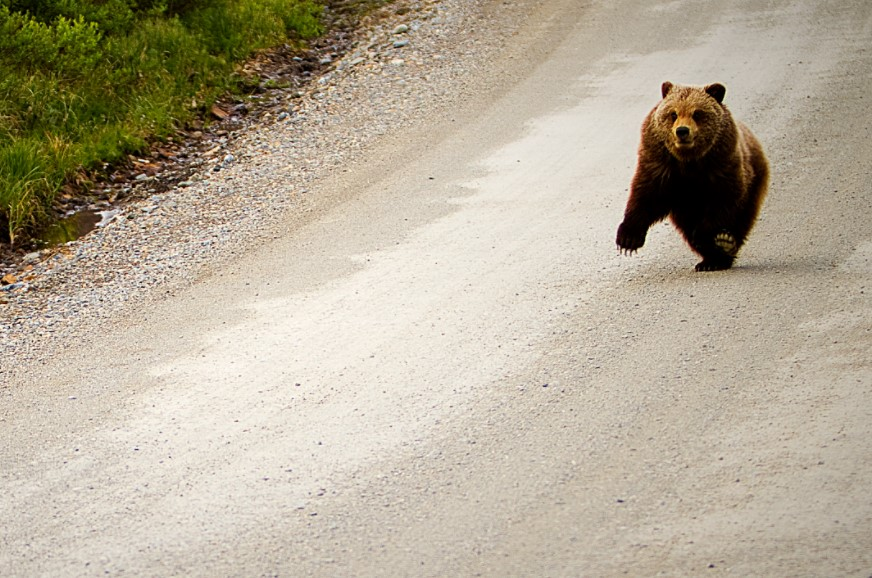
What Is The Most Distance A Bear Can Run
We’ll summarize an excellent piece from the National Park Service that we found. The bulletin’s title is “Grizzly Bear Speed.”
About the speed of brown bears, Ernest Thompson Seton wrote in his book named “Lives of Game Animals”: “He’s also quick, in incredible proportion to his stature. Those who get their impression of bears’ speed from a lumbering, the slouching prisoner will be blown away by the actual thing.
Brown bears can run faster than every horse for 50 to 100 yards and have the endurance to keep ongoing. In the spring, ponies which have spent the winters outside are frequently prey for grizzly bears, who may now approach them mostly on vast plains.”
An account about a brown lady bear that had just awoken from winter with its cubs appears in the very same 1937 bulletin. Because of a car passing by, the mother lost sight of the cubs and pursued it for 2 miles at a pace of 27 mph (45 km/h). Although if you can somehow run quicker than bears, you wouldn’t equal their endurance.
When You See A Bear, What Should You Do
With the answer to the “How fast can a bear run” question as mentioned above, you have already known the reason why you should never try to outrun one. But when you see a bear, what should you do instead?
First, you can actively avoid bear interactions in the woods by making regular noise while trekking and keeping sufficient food storage in mind so that these mainly friendly critters do not come to your camp. Know what bears are common in the area and how to spot them, as different kinds would necessitate different responses.
For example, if you come across black bears — the most prevalent in the United States, distinguished by its direct profile and large, pointy ears – make eye contact, open your arms wide to make you look big, and make a lot of noise. Eye contact with such brown bears, identified by their rounded profile and noticeable shoulder hump, was never recommended. Scream, holler or create any other obnoxious noises. Slowly rise, if possible, confronting the bear.
If you think you’ll go into a grizzly-infested area, bear spray is a good idea. If you spot a bear, do not even turn the back on them, and don’t run since their predatory instincts will make them follow you.
This news piece was found in the old Washington Post. Morinda Marube was a professional athlete who claims to know what to do in black bears’ encounters. When confronted with black bears while fleeing, he went the opposite way of just what he knew. He bolted.
Two black bears approached throughout his 18 miles run. Knowing that bears might climb a tree, he thought the only way to get away was swimming or running. He couldn’t, however, swim. He’d passed a property 20 yards beforehand and figured he’d be able to return to it.
The bears pursued him as quickly as he began running. The sprinter, Morinda Marube, said to journalists that the bears were all within ten yards of him when he arrived at the residence. He untangled the screening door and walked inside the raised porch because the house was empty.
Even though the bears can see him, they didn’t even enter the doorway. According to the runner, the two black bears might have grabbed him if the home had been more than twenty yards away.
Summary
https://www.youtube.com/watch?v=-zptCXYxces
As per the National Wildlife Federation, the brown bear often called a grizzly bear, has the fastest forelegs of the eight bear species, achieving speeds up to 35 miles per hour. The grizzly bear is slightly quicker than the American black bear, which is the globe’s most frequent bear species.
Now, you know how fast can a bear run and why you should never try to outrun one. Of course, if you know of any other information about bears that you’ve heard about and wanted to share, please let us know in the comments area below! Thank you for taking the time to read this article. Have a wonderful day!
Your perfectly optimized content goes here!

